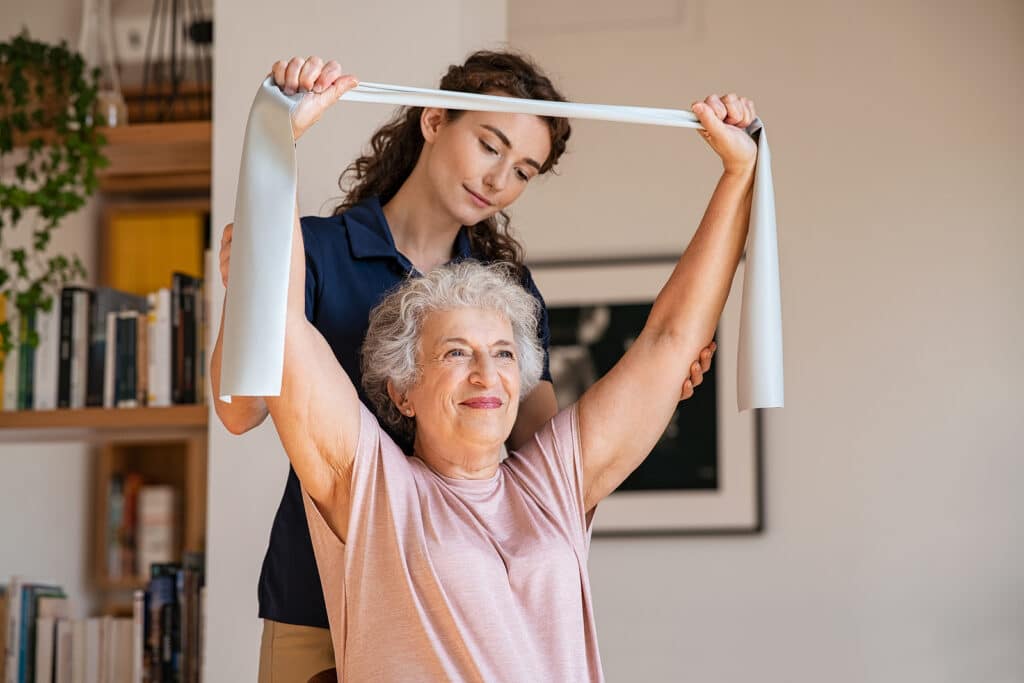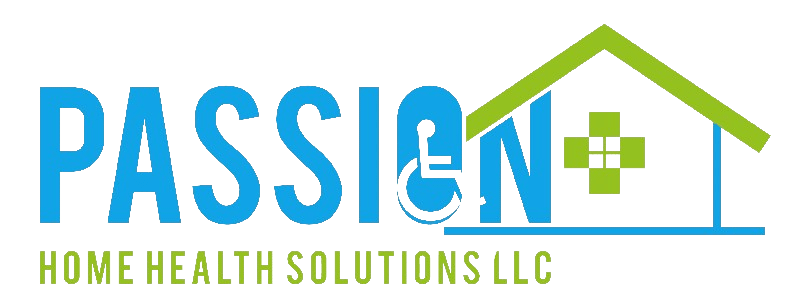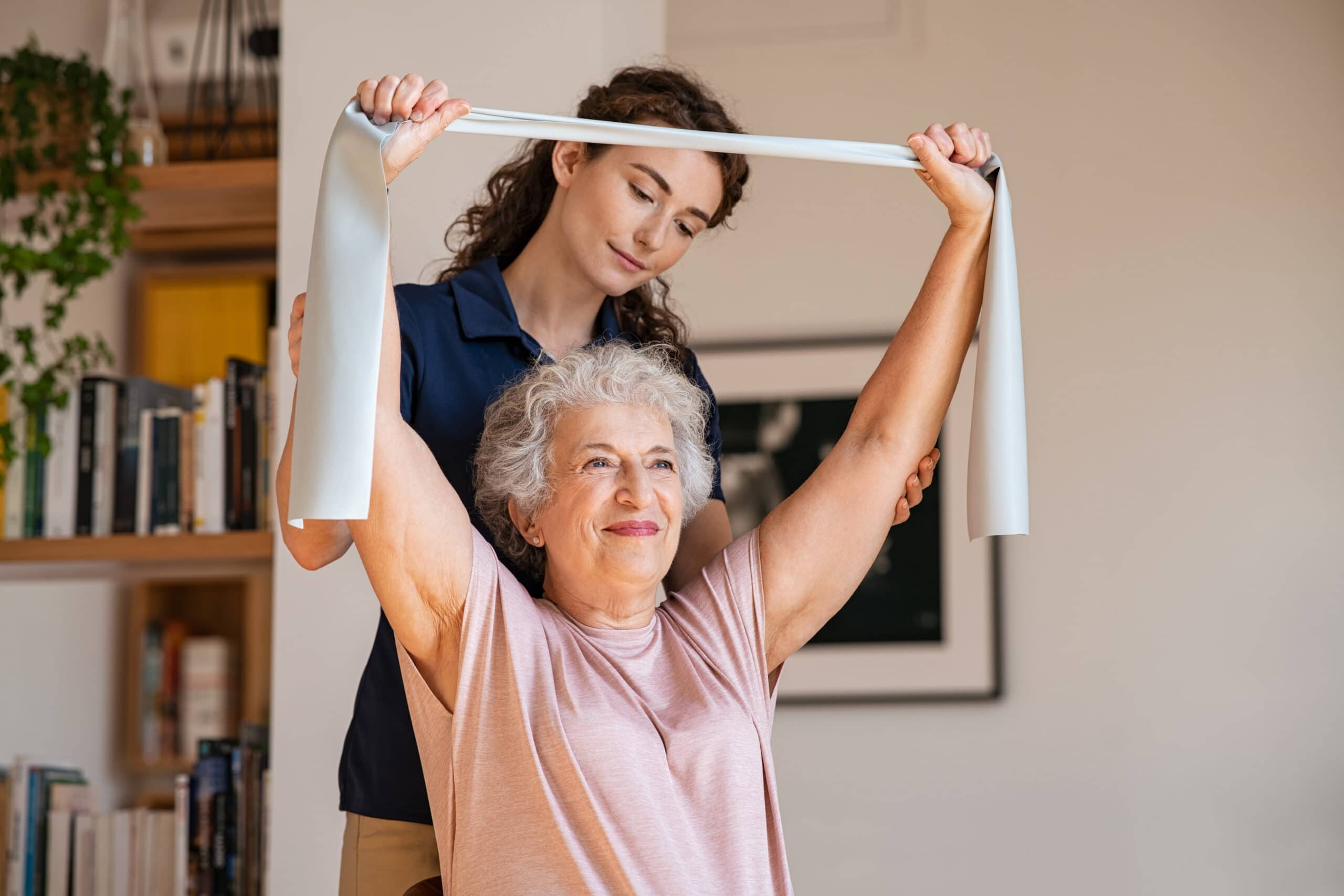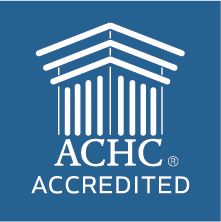Understanding the Differences Between In-Home Physical and Occupational Therapies
Physical or occupational therapy, or both, could be exactly what she needs in order to meet those challenges.
PT and OT Share a Few Things
Physical therapy and occupational therapy each work toward helping your aging family member to set and to achieve specific goals. Quality of life is a big focus with each type of therapy, and often older adults find that they need both types of therapies. Because of that fact, it helps to fully understand not just how OT and PT are very different from each other.
Physical Therapy Involves Physical Function and Movement
Physical therapy might be prescribed after your senior experiences an injury or after she has surgery. PT assists with building strength and stamina that is necessary for recovery. Your senior will likely receive an entire routine of exercises and stretches that she does at first with a physical therapist and then as “homework” between sessions. In-home physical therapy means that a physical therapist comes to your senior and helps her at home with her goals.
Occupational Therapy Focuses on Daily Tasks
If your elderly family member has been prescribed occupational therapy, she’s dealing with different goals and needs. People are typically recommended to OT if they’ve experienced something that hinders their ability to perform daily tasks properly or even at all. OT can focus on doing things like learning to use assistive devices, like modified eating utensils, or learning new ways to perform daily tasks. If your senior has a stroke, she may not be able to brush her hair or take a shower. An occupational therapist assesses what she’s able to do and what she needs to improve and works toward that end.
Goals and Expected Outcomes Are Different
Because of their different focuses, goals, and outcomes for PT and OT are sometimes worlds apart. That’s why there might be situations in which your elderly family member’s doctor feels that both therapies might be helpful for your senior. When considering which therapy is most important for your senior, consider things like what will most improve her quality of life and what most helps her on multiple levels. The answer may very well be that both are equally important, and that’s a valid answer.

What Is Physical Therapy Care at Home?
Physical therapy at home is when a physical therapist comes to your home to provide rehabilitation services, usually after an injury or illness. The most common reasons to do physical therapy at home rather than in an outpatient facility include [1]:
- You can’t travel to therapy because your functional mobility is too limited
- Leaving home presents a health risk because your condition is severe or acute
- You don’t have access to transportation to get you to physical therapy.
Types of Physical Therapy
There are 6 main types of physical therapy [2]. Depending on your specific needs, you may require more than one type of physical therapy at home.
Geriatric Physical Therapy
As people age, some muscles don’t work as well as they used to. With the aging population, physical therapy for older adults is one of the most common types of therapy. A physical therapist at home can help people learn to adjust their gait and posture, compensate for weakened muscles, and reduce the chance of future injuries.
Pulmonary and Cardiovascular Physical Therapy
A less common – but no less important – type of physical therapy is cardio and pulmonary physical therapy, which helps people with severe circulatory system or heart problems. The goal is to increase the endurance of specific muscles and give people a better ability to become self-reliant.
Orthopedic Physical Therapy
Even after they heal, injuries can cause long-term damage to muscle strength. Atrophy caused by reduced use of a muscle or immobility after surgery may require orthopedic physical therapy to regain the muscle’s former strength.
Neurological Physical Therapy
Brain or spine injuries or problems may require neurological physical therapy that focuses on improving the quality of life for patients, even if these injuries won’t heal all the way.
Vestibular Physical Therapy
Dizziness can cause dangerous falls, so people who struggle with vertigo may benefit from vestibular physical therapy that strengthens certain muscles for increased steadiness and also focuses on balance training.
Pediatric Physical Therapy
Since children grow so quickly, they may have different challenges than adult patients, such as bones growing so quickly that the muscles can’t keep up. Pediatric physical therapy addresses these specific challenges.
What Are the Benefits of Physical Therapy at Home?
Physical therapy at home offers many benefits, including:
- There is no denying that a physical therapist coming to your home is more convenient than traveling to an outpatient facility.
- Increased functionality. When a physical therapist works with a patient in their home, they can show the patient exactly how to do the exercises in their specific home environment, which leads to better understanding and adherence to the program.
- One-on-one care. In outpatient physical therapy settings, physical therapists may be busy juggling several patients at once with paperwork or other duties. With in-home physical therapy, the therapist can focus solely on the patient.
- Prevent falls and major injuries. Physical therapists measure a patient’s biomechanics – their ability to use their bodies efficiently and correctly – to look for signs of balance issues, weak muscles, or changes in the way someone walks. Then, they create a customized plan that has the ultimate goal of helping to prevent falls and serious injuries.
- Less stressful. Outpatient physical therapy centers can be crowded, noisy, and large, making the already stressful experience of physical therapy even more difficult.
- A 2016 study showed that physical therapy at home was about as effective as physical therapy in an outpatient facility [3].

What Is Occupational Therapy Care at Home?
Occupational therapy teaches you how to adapt to pain or an illness, injury, or disability that makes it difficult to take care of yourself [1]. Rather than going into an office for an appointment, an occupational therapist can come to your home to help you with occupational therapy where you can get the most benefit from it.
What Types of Services Are Included With Occupational Therapy at Home?
Some of the things an occupational therapist at home may do include:
- Perform an individualized evaluation to determine goals
- Make recommendations for adaptive equipment and how to use it
- Create a customized care plan to improve the ability to perform activities of daily living
- Provide guidance to caregivers and family members
- Perform regular outcomes evaluations to ensure goals are being met and adjust the plan as necessary.
Types of Occupational Therapy
Since occupational therapy can help a wide variety of people with very different issues, there are many types of occupational therapy, including [2]:
- Autism
- Geriatric
- Pediatric
- Physical rehabilitation
- Mental health
- Driving and community mobility
- Low vision
- Feeding, eating, and swallowing
- Environmental modification
- School systems specialty
What Are the Benefits of Occupational Therapy at Home?
What Does an Occupational Therapist Do?
Some of the amazing benefits of occupational therapy you or your loved one may experience include:
- Reduced stress
- Improved self-esteem
- More social interaction
- Enhanced communication
- Regained strength
- Keeping or regaining abilities
- Patients can recover at home where they are more comfortable
How Can I Tell If My Loved One Needs Occupational Therapy?
To decide whether your loved one needs occupational therapy, consider whether they would benefit from things like [4]:
- Learning new ways to perform self-care tasks they have been unable to do themselves
- A home safety evaluation
- Improved sleep
- Re-learning how to drive after a devastating injury or illness
- Improved coordination
- Fall prevention
- Functional mobility
Other signs your loved one may need occupational therapy include:
- Changed health condition
- Falls or balance issues
- Lack of hygiene
- Memory problems
- Reduced independence
If you or a loved one are considering in-home physical therapy or in-home occupational therapy, contact our helpful staff today. Passion Home Health Care Solutions is A Trusted Skilled Nursing Home Care Solutions provider in the Danville, South Boston, Roanoak, Alexandria, Fairfax, Loudoun, Newport News, Richmond and Vienna Virginia surrounding areas.
Passion Home Health Solutions LLC
Vienna, VA 22182
Phone: (703) 462-9141
- What are the Most Common Speech Disorders in Adults? - October 25, 2023
- World Mental Health Day: The Importance of Support for Older Adults with Depression - October 9, 2023
- How Home Health Care Helps Seniors With Alzheimer’s - September 20, 2023




